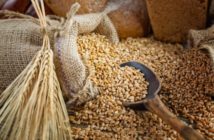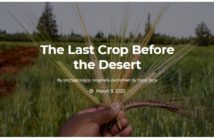By COLIN A. CARTER and HENRY I. MILLER
IT is not often that a stroke of a pen can quickly undo the ravages of nature, but federal regulators now have an opportunity to do just that. Americans’ food budgets will be hit hard by the ongoing Midwestern drought, the worst since 1956. Food bills will rise and many farmers will go bust.
An act of God, right? Well, the drought itself may be, but a human remedy for some of the fallout is at hand — if only the federal authorities would act. By suspending renewable-fuel standards that were unwise from the start, the Environmental Protection Agency could divert vast amounts of corn from inefficient ethanol production back into the food chain, where market forces and common sense dictate it should go.
The drought has now parched about 60 percent of the contiguous 48 states. As a result, global food prices are rising steeply. Corn futures prices on the Chicago exchange have risen about 60 percent since mid-June, hitting record levels, and other grains such as wheat and soybeans are also sharply higher. Livestock and dairy product prices will inevitably follow.
More than one-third of our corn crop is used to feed livestock. Another 13 percent is exported, much of it to feed livestock as well. Another 40 percent is used to produce ethanol. The remainder goes toward food and beverage production.
Previous droughts in the Midwest (most recently in 1988) also resulted in higher food prices, but misguided energy policies are magnifying the effects of the current one. Federal renewable-fuel standards require the blending of 13.2 billion gallons of corn ethanol with gasoline this year. This will require 4.7 billion bushels of corn, 40 percent of this year’s crop.
Other countries seem to have a better grasp of market forces and common sense. Brazil, another large ethanol producer, uses sugar instead of corn to make ethanol. It has flexible policies that allow the market to determine whether sugar should be sold on the sugar market or be converted to fuel. Our government could learn from the Brazilian approach and direct the E.P.A. to waive a portion of the renewable-fuel standards, thereby directing corn back to the marketplace. Under the law, the E.P.A. would first have to determine that the program was causing economic harm. That’s a no-brainer, given the effects of sharply higher grain prices that are already rippling through the economy.
The price of corn is a critical variable in the world food equation, and food markets are on edge because American corn supplies are plummeting. The combination of the drought and American ethanol policy will lead in many parts of the world to widespread inflation, more hunger, less food security, slower economic growth and political instability, especially in poor countries.
If the E.P.A. were to waive the rules for this year and next, the ethanol industry and corn farmers, who have experienced a years-long windfall, would lose out. Wheat and soybean farmers would also lose, because the prices of those crops have also been driven up: corn competes with soybeans for acreage and is substituted for wheat in some feed rations.
Any defense of the ethanol policy rests on fallacies, primarily these: that ethanol produced from corn makes the United States less dependent on fossil fuels; that ethanol lowers the price of gasoline; that an increase in the percentage of ethanol blended into gasoline increases the overall supply of gasoline; and that ethanol is environmentally friendly and lowers global carbon dioxide emissions.
The ethanol lobby promotes these claims, and many politicians seem intoxicated by them. Corn is indeed a renewable resource, but it has a far lower yield relative to the energy used to produce it than either biodiesel (such as soybean oil) or ethanol from other plants. Ethanol yields about 30 percent less energy per gallon than gasoline, so mileage drops off significantly. Finally, adding ethanol actually raises the price of blended fuel because it is more expensive to transport and handle than gasoline.
As the summer drags on, the drought is only worsening. Last week the International Grains Council lowered its estimate of this year’s American corn harvest to 11.8 billion bushels from 13.8 billion. Reducing the renewable-fuel standard by a mere 20 percent — equivalent to about a billion bushels of corn — would offset nearly half of the expected crop loss due to the drought.
All it would take is the stroke of a pen — and, of course, the savvy and the will to do the right thing.
Colin A. Carter is a professor of agricultural and resource economics at the University of California, Davis. Henry I. Miller, a physician, is a fellow in scientific philosophy and public policy at the Hoover Institution.
.







